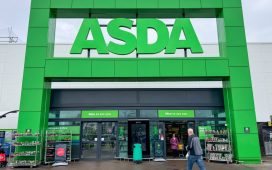Unlock the Editor’s Digest for free
Roula Khalaf, Editor of the FT, selects her favourite stories in this weekly newsletter.
Britons have a peculiar relationship with Marks and Spencer. A bit like British Airways, M&S attracts strong opinions in a way few other companies do. M&S meant “nothing to no one” and didn’t “listen to its customers” were among the accusations once often levelled against it.
At the end of the last decade, growth seemed a dim prospect. Indeed chair Archie Norman warned in 2018 that M&S was on a “burning platform”. Today, it is growing. More remarkably, there are reasons to believe it can continue.
Talk of a turnaround at M&S can cause eyes to roll. With good reason: shareholders have awaited one for decades. Yet both M&S’s food and clothing businesses have now delivered 12 consecutive quarters of sales growth. It is also taking market share. This helped M&S to post a forecast-beating 58 per cent rise in annual pre-tax profit to £716mn in its last fiscal year, before adjustments.
The market has helped: affluent shoppers have been more resilient in the cost of living crisis. But rival John Lewis has struggled. Many mid-market clothing retailers have disappeared, points out PwC’s Kien Tan.
Norman and M&S’s chief executive Stuart Machin have tackled many of the basics. M&S is renewing its stores, closing larger, older properties in undesirable locations and opening newer formats where shoppers actually go.
Machin admits M&S is playing a 20-year catch-up game to ensure it has stores in the right locations. But the strategy is paying off. Sales at these new format stores are performing ahead of plan. For “full line” stores, the pay back is around two years. There is plenty more to go at: only a quarter of the estate has been renewed so far. They are also tackling the supply chain, speeding it up and sourcing items from fewer but bigger factories.
M&S’s shares have risen nearly 80 per cent in the past year, yet it still looks reasonable value on a forward price earnings multiple of 11.6 times, behind Sainsbury’s on 12.6 times and Next on 15 times.

The recovery is by no means complete. There are still big issues to tackle, including IT upgrades, improving its digital presence and international business.
But M&S can now afford the investment required. Free cash flow from operations improved to £414mn from £170mn a year ago. Excluding lease liabilities, M&S has net funds of nearly £46mn.
Unlike previous efforts, this turnaround has a good chance of actually sticking.










